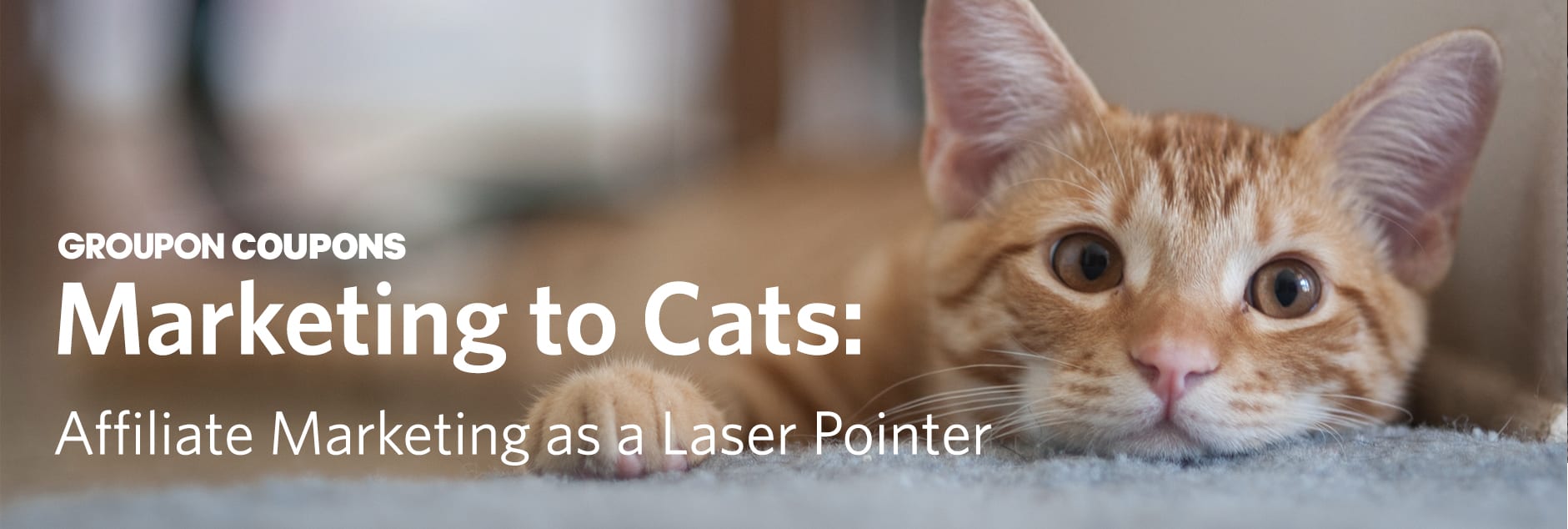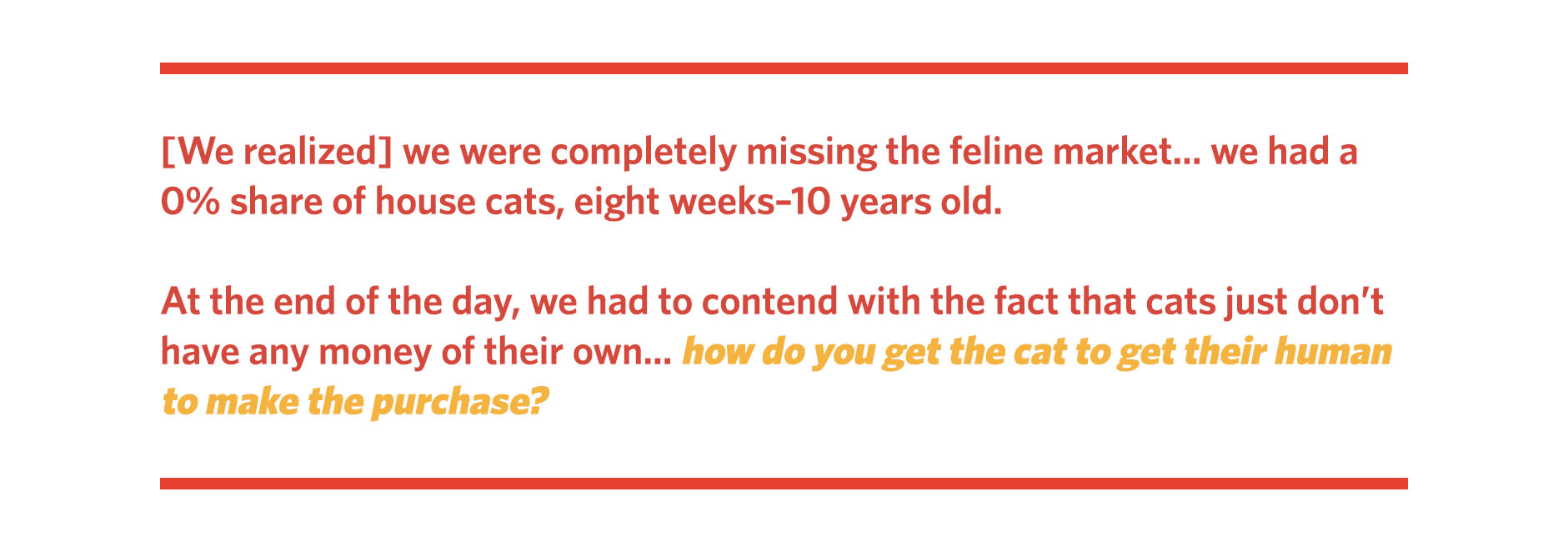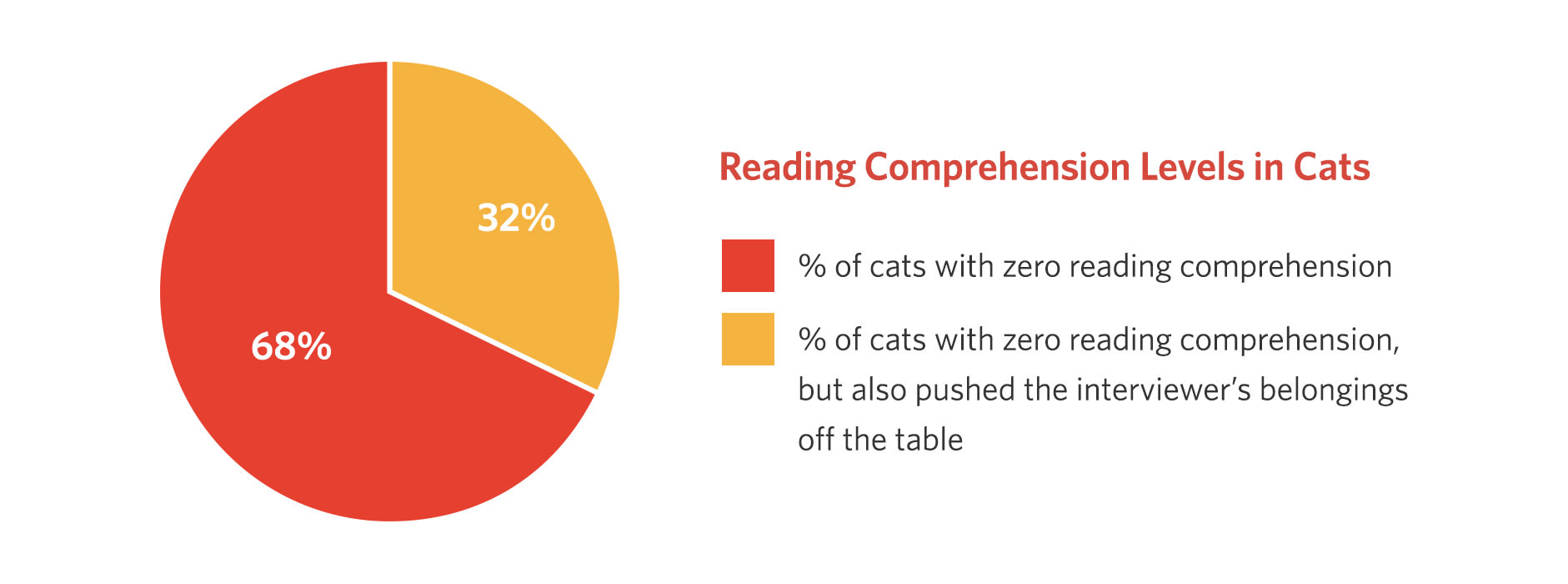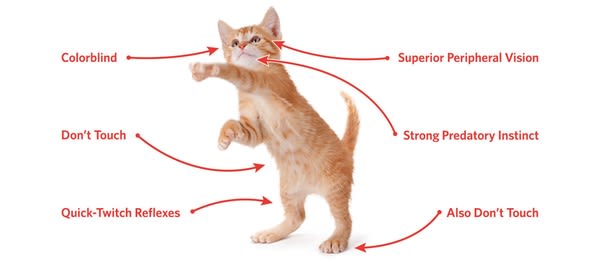With Groupon, shoppers can discover the best a city has to offer with Groupon Local, enjoy vacations with Groupon Getaways, and find a curated selection of electronics, fashion, home furnishings and more with Groupon Goods.
In our latest publisher spotlight, we have a special, more humorous take on Groupon's affiliate marketing strategy. Enjoy their amusing responses to our publisher spotlight questions, featuring your favorite feline friends.

The Groupon Reach Network, launched in 2018, is the collaboration of Vouchercloud and Groupon, along with our Whitelabel partners. Supported by HuffPost, Bustle, and The Today Show, the Groupon Reach Network is the ultimate shopper destination. As one of the industry’s largest players, the Reach Network gives our partners access to more customers, an unrivaled reach, streamlined account management and improved campaign performance - all through a single, unified approach.
Has there been a pivotal shift or turning point in your affiliate activities within the last 12 months? If so, what was it?
The last few months have been a wild ride that has touched every aspect of our approach to affiliate marketing, causing us to fundamentally rethink the space we operate in and radically transform long-established tenets of our field. For instance, what if the marketing funnel...was a marketing laser pointer? What if customer touchpoints...touched back? What if we thought less about consumer intent...and more about consumer gut biome? It honestly gives us shivers just recalling those pitch meetings.
The whole sea change started a few months ago when our intern, Skip Larson, signed into our Google Analytics account to do some routine breakdowns of audience demographics ahead of our Q4 strategy session. We wish Skip was here to give an exact sequence of events for what happened next, but unfortunately he and his legal team are busy fighting an extradition request from The Hague, so we only know the conclusion he brought to the conference room–which was a bombshell: we were completely missing the feline market.

Goosebumps, right? Specifically his analysis showed that we had a 0% share of house cats, eight weeks–10 years old. 0% of any segment is of course embarrassing, and there was some reflexive pushback from the room concerning the unreliability of cohort metrics, the wisdom of trusting an intern, what the relative purchasing power of non-humans in suburban households was anyway, etc. But we eventually saw this response for what it was: bruised pride. There had been a fundamental oversight on our watch, and we were deeply ashamed.
Even as we were living it, we understood that that moment of realization was going to be an inflection point for our business. We could hang our heads and let the failure break us, or we could get to work. And we don’t mind saying that we are just so, so proud of our team for how they chose to respond.
Immediately, the SEO squad took on the big challenge of online marketing to cats: endemic illiteracy. Our initial research showed that 100% of our target demographic had no reading comprehension, and in fact did not perceive written language in any way. We notified our political outreach wing, but we understood that while lobbying for improvements in cat education was the right thing to do, it wasn’t going to result in any short-term wins. The solution, it turned out, lay in some inspired use of data gathered by our Social Media Research department.

The SMR folks had already run their scraping tools and found that cats have an outsized presence on almost every social media platform. While cats may be severely underrepresented on Twitter for instance, they are huge on Instagram and Snapchat, even bigger on Facebook, and are making promising inroads on TikTok. What is more, many posts containing cats show them interacting with computers. We learned that while cats cannot read or write, they do derive some sort of satisfaction from laying on or standing in front of monitors, batting at wires, and, crucially, walking across keyboards. By studying hundreds of hours of video footage of cats inadvertently typing, and then meticulously correlating those findings with Google Trends research, we knew we had a solid foundation to build a campaign. To get in front of the unblinking eyes of millions of cats worldwide, we were going to claim the top organic results for the following keywords: “azaxcasdvrlkm”, “sssssdfgpppppppppppppppppppppp”, “ffggy jyhjgjioppp00-=”, and–for the French-speaking areas of the world that predominantly use an AZERTY keyboard configuration–“wwwwwwdfsdart43qtt45”.
Solutions piled up from there, as one breakthrough led to another. We asked: now that we know how to get the cat to our pages, how do we get them to click on our links? Cats are colorblind, but their superior peripheral vision and quick-twitch reflexes paired with a strong predatory instinct gave our image design and UI teams an idea: erratically moving clickable objects combined with haptic feedback technology. Our designers used relatively dull hues of green and blue (the colors most prevalent in a cat’s vision spectrum) to depict mouse-like affiliate links, while engineers built code that caused the links to feel as if they were wriggling and squirming when hovered over. A/B testing confirmed a 62% improvement in tablet and mobile CTR right away.
Not every idea turned out to be feasible, of course. For instance, our influencer marketing efforts hit rocky ground when we discovered that cats often react extremely negatively to other cats, and so our stable of superstar social media feline had to be sidelined. Our influencer handlers did observe that cats are very susceptible to suggestion from laser pointers, feathers, and the reflection of sunlight off of watch faces, but the cost of scaling that sort of campaign quickly proved prohibitive and logistically problematic.

We also narrowly avoided a true tragedy when we pursued a project that grew out of the haptic program. One of our programmers noticed that the extra demand from the code was slightly overclocking the CPU of older computers, causing them to heat up and increase fan usage. He reasoned that cats like warm things and the fan gives off a soothing vibration when at capacity, so perhaps we could increase average time on page and cross another OKR off the list if we pushed the processing demand further and made the overheating a feature rather than a bug. Luckily, the fault in this reasoning was caught in the initial “smoke test” of the concept, when literal smoke, as well as literal flames, filled the engineering pod and caused an evacuation of the third floor. Further iteration of that program was called for, and a beta release is the top priority for all relocated engineers healthy enough to work on the next scrum sprint.
And so, with all of our successes and valuable lessons learned, we arrived at the most formidable and frustrating piece of the puzzle: conversion. It’s a truism of our profession: you can increase impressions and page views, solve the riddle of CTR, even extend the amount of time your audience spends with your content if you don’t mind starting a fire or two, but until you figure out how to get more customers to take out their credit cards, you’re a failure. At the end of the day, we had to contend with the fact that cats just don’t have any money of their own. The final hurdle then was how do you get the cat to get their human to make the purchase?
Now our legal department wants us to be very clear on this next bit: although the word “toxoplasmosis” may show up a number of times in internal email chains and Slack channels, and though we affirm that we did do some (theoretical) research on the T. gondii parasite that causes the condition, and though we may have had knowledge of the correlation between this common parasite found in cat feces and subtle neural and behavioral changes thought to cause infected humans to be more empathic and generous with their cats, Groupon Reach Network as an organization in no way encouraged or condoned Skip Larson to explore the ethically dubious path he allegedly broached vis-a-vis “mind control” and “introducing a genetically modified brain parasite into the global cat food supply chain”. We strongly disagree with the tribunal’s assertion that Skip’s efforts crossed the hazy line from affiliate marketing and into biological warfare and crimes against humanity territory, and we’re also disappointed in AdWeek’s characterization of our efforts as “a ghoulish mix of of the Ludovico Technique and the CIA’s MK Ultra program.” We wish our former intern well, and intend to act as character witnesses on his behalf–once corporate counsel signs off on the idea–at any International Court of Justice proceedings that he may face.

Do you have any upcoming promotions, new launches, or exciting news you would like to share?
Complacency in this business is fatal, but when we think about the work we have done for this campaign–the hundreds of pages of breathtakingly researched keyword gibberish, all of which contain desaturated interactive objects that ping pong and dart erratically across the screen and cause our mice to leap and twitch–when we gaze across the gently smoldering remains of the engineering pod and take in the parade of UN blue helmets, all carrying impounded hard drives full of theoretical chatter about the feasibility of aerosolizing T. gondii, the temptation is to just sit back and reflect.
But of course a canine-targeted campaign is the logical next step.
Interested in partnering with Groupon? Please contact our publisher management team.
Original post can be found directly on the Groupon blog.

